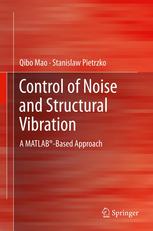

Most ebook files are in PDF format, so you can easily read them using various software such as Foxit Reader or directly on the Google Chrome browser.
Some ebook files are released by publishers in other formats such as .awz, .mobi, .epub, .fb2, etc. You may need to install specific software to read these formats on mobile/PC, such as Calibre.
Please read the tutorial at this link: https://ebookbell.com/faq
We offer FREE conversion to the popular formats you request; however, this may take some time. Therefore, right after payment, please email us, and we will try to provide the service as quickly as possible.
For some exceptional file formats or broken links (if any), please refrain from opening any disputes. Instead, email us first, and we will try to assist within a maximum of 6 hours.
EbookBell Team

4.1
60 reviewsControl of Noise and Structural Vibration presents a MATLAB®-based approach to solving the problems of undesirable noise generation and transmission by structures and of undesirable vibration within structures in response to environmental or operational forces. The fundamentals of acoustics, vibration and coupling between vibrating structures and the sound fields they generate are introduced including a discussion of the finite element method for vibration analysis. Following this, the treatment of sound and vibration control begins, illustrated by example systems such as beams, plates and double walls. Sensor and actuator placement is explained as is the idea of modal sensor–actuators. The design of appropriate feedback systems includes consideration of basic stability criteria and robust active structural acoustic control. Positive position feedback (PPF) and multimode control are also described in the context of loudspeaker–duct and loudspeaker–microphone models. The design of various components is detailed including the analog circuit for PPF, adaptive (semi-active) Helmholtz resonators and shunt piezoelectric circuits for noise and vibration suppression. The text makes extensive use of MATLAB® examples and these can be simulated using files available for download from the book’s webpage at springer.com. End-of-chapter exercises will help readers to assimilate the material as they progress through the book. Control of Noise and Structural Vibration will be of considerable interest to the student of vibration and noise control and also to academic researchers working in the field. It’s tutorial features will help practitioners who wish to update their knowledge with self-study.